Leave a Comment:
Great article! I’m reading up different types of miter saws and their uses and this is the easiest and most informative I’ve come across so far. Keep up the good posting.. Mate
Thanks
Reply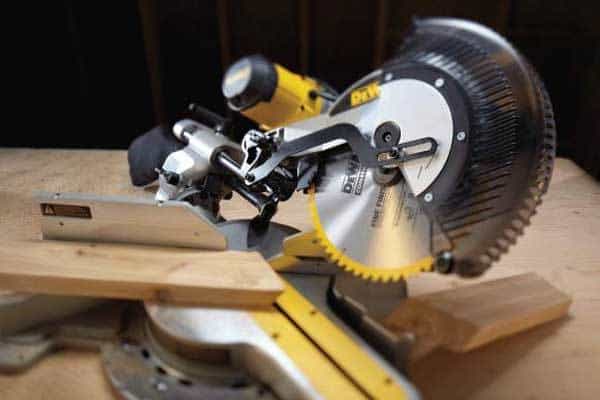
Miter saws work with various types of circular blades, suited for different types of tasks to offer greater flexibility and versatility. Whether you are looking for the best basic miter saw that makes straight crosscuts for small boards like a cutting board for a chef knife or a sliding compound miter saw that makes larger and longer cuts for crown molding, picture frames, and window casements, you can make the process quicker and more effortless with the right saw.
To help you choose the best miter saw for your specific project, we have compiled a comprehensive guide featuring the different types of miter saws and their motor, bevel and cutting capacity. We have also outlined the pros and cons of each type of miter saw and its uses.
Basic Miter Saw | 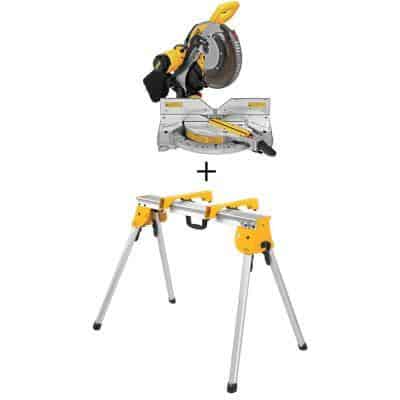 Compound Miter Saw | 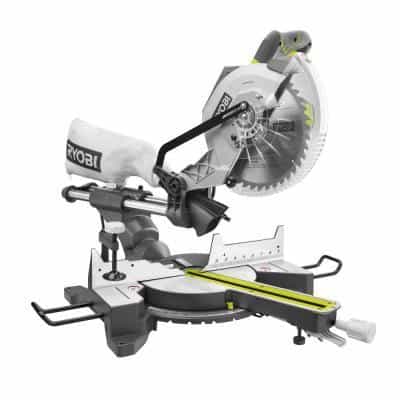 Sliding Compound Miter Saw | 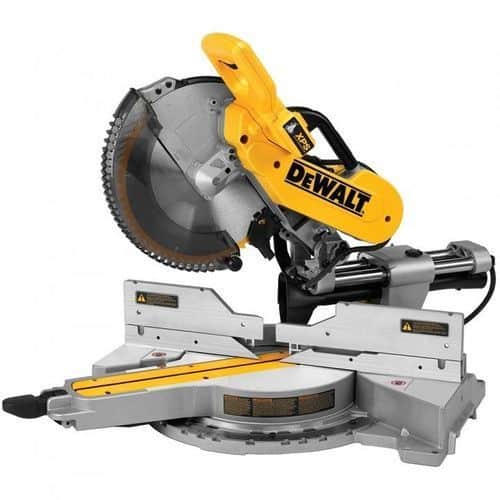 Double-Bevel Sliding Compound Miter Saw | 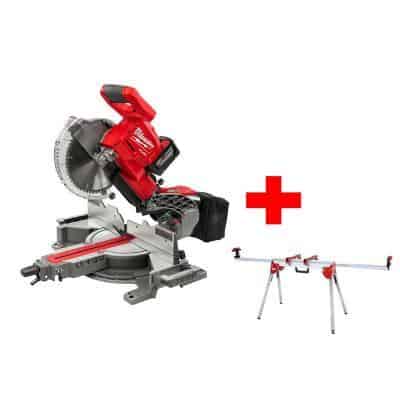 Cordless Sliding Compound Miter Saw | |
|---|---|---|---|---|---|
| Features/Benefits | Fast, easy to use and more precise than a chainsaw. Comfortable and convenient to operate due to the light weight. Inexpensive and ideal for beginners and users on a budget. | Pivoting blade moves left or right to trim downwards through the board. The rotating head tilts in one direction for angled cuts of 50 to +90 degrees and crown molding. | Sliding head allows for larger and longer standard pull down cuts and angled bevel cuts. Tilts forwards and backwards in either left or right direction. | The saw blade tilts and adjusts in both left and right directions for beveled cuts or a combination of bevel and miter cuts, also known as compound cuts. Angled cuts range from 50 to +50 degrees so you do not have to turn over the workpiece. | Operates anywhere because they do not require to be plugged in to a generator or power outlet. Easy to carry. Additional Lithium-Ion batteries extend runtime and increase torque to speed up operation. Some models are powered by both batteries and electricity for versatile sources of power. |
| Style/Design | Not customized | Single and Dual | Single and Dual | Single and Dual | Single and Dual |
| Recommended for | Miter cuts and straight crosscuts. | Miter cuts, straight cuts and bevel cuts. | Miter cuts, wide bevel cuts, straight crosscuts, and compound cuts. | Miter cuts, straight crosscuts, bevel cuts, and a combination of bevel and miter cuts. | Miter cuts, straight cuts and bevel cuts for single version, and Miter cuts, wide bevel cuts, straight crosscuts, and compound cuts for dual models. |
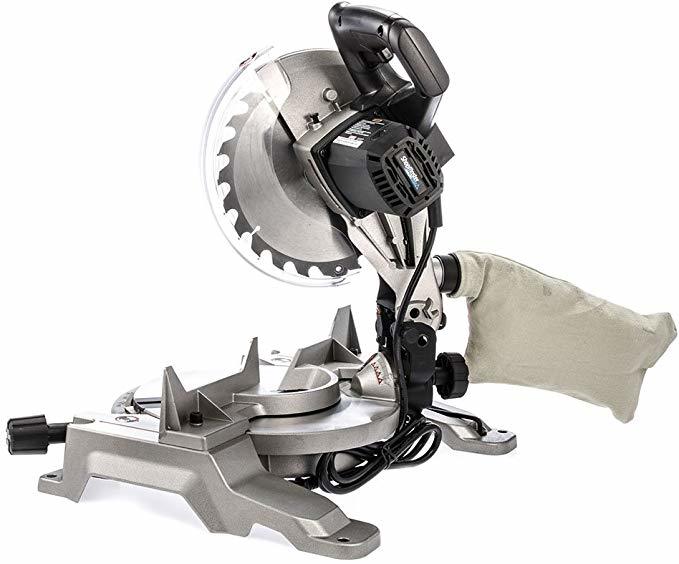
Also known as a standard miter saw, this variety that typically makes miters, straight crosscuts and bevel cuts at a degree ranging from -45° to +45°. A bevel cut is made with an adjustable blade that slopes vertically or horizontally to cut along the edge of the wood. The main advantage of basic miter saws is their low pricing range. They are the most ideal kind for 45-degree cuts on small boards, beginners who prefer their ease of use, and customers on a budget. However, they can only cut in one direction and their blades only measure 10 or 12 inches, which limits the depth and scope of your cuts.
The 10-inch Delta Power Equipment Corporation S26-262L comes with Laser Guide and bevels to the left from 0° to 47°. It only costs $103. This is a budget option for you.
Pros: Light weight for easy control and portability, budget-friendly and ideal for small projects.
Cons: Cannot be tilted for bevel cuts. Small blade size limits the depth and scope of cuts.

To extend your cutting capacity, you should invest in the best sliding compound miter saw that tilts forwards and backward in either left or right direction on a sliding arm to make standard and beveled cuts. This allows you to make larger and longer cuts with less effort and create pull-down cuts similar to those made by chop saws by locking the sliding rail. Their con is their inability to bevel in both directions. Instead, you can only make angled cuts to one side, either left or right. We would recommend DEWALT DWS779 12″ Sliding compound Miter saw which has been rated 4.7 out of 5 by buyers and provides great value for money at less than $400.
Pros: Sliding head allows for larger and longer standard pull down cuts and angled bevel cuts.
Cons: Only tilts forwards and backward in one direction so you have to flip the board to cut the opposite side.

A compound miter saw features a rotating head that makes miter cuts, straight cuts, and bevel cuts. Tilts in one direction for bevel cuts and crown molding. The blade moves left or right, or in both directions in the dual versions to trim downwards through the board.
This is the best type of miter saw to purchase if you are looking for an affordable option that extends to more than 90-degree cuts. Their main con is that they only tilt in one direction, so you have to turn over the wood to make beveled cuts in the opposite direction. Hitachi C10FCG 15-Amp is an effective and affordable Single Bevel 10 inch Compound Miter Saw that costs approximately $130. It angles 0 to 52 degrees to the right or left.
Pros: Handles any standard cut.
Cons: Single-bevel models only tilt in one direction, so you have to turn over the wood to make beveled cuts in the opposite direction.

A Double-Bevel Sliding Compound Miter Saw is also referred to as a dual-compound miter saw. While it is similar to a compound miter saw in terms of cutting blades that move left or right, this particular type has the additional ability to also tilt and adjust saw blades in both left and right directions for beveled cuts so you do not have to flip the wood over. A Double-Bevel Sliding Compound Miter Saw is the most versatile miter saw for any workshop because it cuts at any angle by beveling in both directions, unlike a Sliding Compound Miter Saw which bevels to one side. Their disadvantage is that they are expensive.
DEWALT 12-Inch DWS780 which costs $500 is a top-rated Double-Bevel Sliding Compound Miter Saw boasting of a 15-amp, 3,800 rpm motor, a 12-inch blade, and a dust bag.
PROS: Tilts in both directions so you do not have to flip the workpiece. Equipped for miter, straight crosscut, bevel cuts, and compound cuts. Versatile by cutting any angle.
CONS: Pricy. Might be complicated for beginners.

The cordless version takes convenience to another level by allowing you to do your carpentry craft without needing to plug the unit into a power outlet. Instead, they are mainly powered by Lithium-Ion batteries with various voltages to increase torque although a few Cordless Sliding Compound Miter Saws offer the options to use both electricity and batteries for versatile sources of power. The con of cordless miter saws that only use batteries is their shortened time of operation. However, their advantage is that they are portable and can be used anywhere, even during a power outage.
Cordless models range from the budget-friendly DEWALT 20V DCS361B MAX 7-1/4-Inch Miter Saw costing $279 to the pricy and sophisticated Makita XSL02Z 18V X2 LXT Lithium-Ion Cordless Dual Slide Compound Miter Saw that is sold at $752 with advanced features for professional carpenters.
Pros: Portable. Battery usage allows for operation anywhere. Some support battery and electricity sources of power. Multiple batteries speed up the cutting process.
Cons: Requires recharging to avoid the risk of the battery running low during operation.
As you can see, different types of miter saws are suitable for specific types of the woodwork to ensure optimal performance and results. Choosing the best miter saw for your particular project will also protect your saw from damage and increase its lifespan. We hope our resourceful review has shed more insight into choosing the right tool for your needs.
Related:
David has been a woodworker for most of his life — in his dad’s cabinet shop. After using the tools himself, he decided to share it his woodworking and power tools knowledge with DIYers. Read more about him
Great article! I’m reading up different types of miter saws and their uses and this is the easiest and most informative I’ve come across so far. Keep up the good posting.. Mate
Thanks
Reply